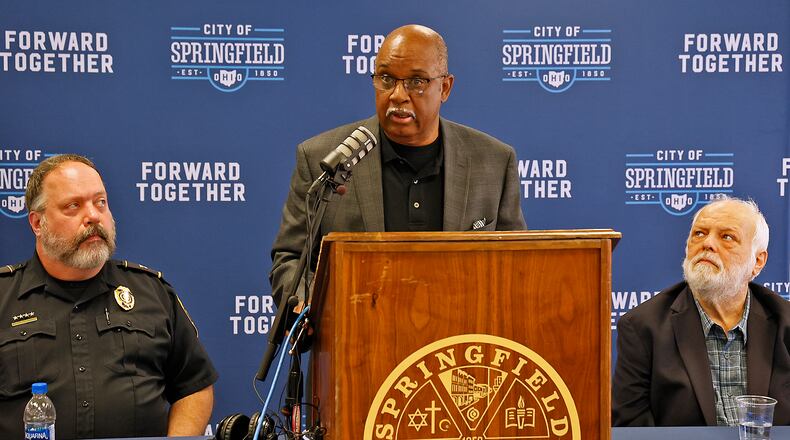They shared information regarding the team’s guiding principles as well as what they hope to accomplish, especially following national calls last year to end police brutality and renewed conversations centered on racial injustice.
The team features nine community members who were appointed and approved by city officials late last year. Those selected by the city are expected to serve a three-year term and are tasked with a number of responsibilities related to the police division.
Those responsibilities relate to the recruitment and retention of a racially and culturally diverse police force on all levels as well as reviewing and providing recommendations regarding policy, procedures and equipment used by local police officers.
The team is similar to the Police Community Relations Advisory Group that fizzled out in the city in 2012. The revamped advisory team will also be tasked with community engagement, reviewing and introducing training practices that address bias as well as reviewing police data and investigative reports regarding police conduct.
The team will not be in charge of conducting any investigations within the department and instead will be part of an oversight process that includes reviewing the results of those investigations.
That also means being involved in communication with the community regarding incidents such as what happened this month related to Springfield resident Eric Cole, a shooting victim who was struck by a police cruiser responding to the scene.
Cole, 42, was flown by CareFlight to Miami Valley Hospital in Dayton, where he died June 14. The incident took place the previous night. Cole was struck by a police cruiser as he lay on the street bleeding from a gunshot wound. The police officer was responding to reports of a shooting.
The officer involved in the incident was identified as Amanda Rosales. She was placed on administrative leave. The Springfield Police Division is conducting the investigation into the shooting, while the Ohio State Highway Patrol is investigating what is being described as a vehicle-pedestrian accident.
Credit: Bill Lackey
Credit: Bill Lackey
The police advisory team’s formation and the work it hopes to conduct follows a wave of national protests following the death of George Floyd on May 25, 2020. He was an unarmed black man who was killed in Minneapolis police custody.
Derek Chauvin, the Minneapolis police officer caught on video kneeling on Floyd’s neck for over nine minutes, was convicted in April of second-degree unintentional murder, third-degree murder and second-degree manslaughter in relation to Floyd’s death.
Chauvin was sentenced to 22½ years in prison on Friday.
The idea for the advisory team in Springfield is to offer another level of transparency and community engagement in terms of local policing.
The group is made up of a diverse group of community members and would be tasked with creating an additional bridge between residents and officers. The revamping came amid national criticism regarding the lack of accountability related to police conduct.
“We need to identify and build upon past achievements while learning from our shortcomings when we underachieve. Our ongoing goals are to display and deliver genuine concern of the issues we face while consistently sharing our purpose and what we represent,” Bacon told Rotarians.
“We have to create and deliver an atmosphere of inclusion so the broader community can embrace the mission and remove any doubt that they may harbor,” he added, noting that a number of cases across the country involving police officers have been marked by a lack of transparency and community trust.
About the Author



